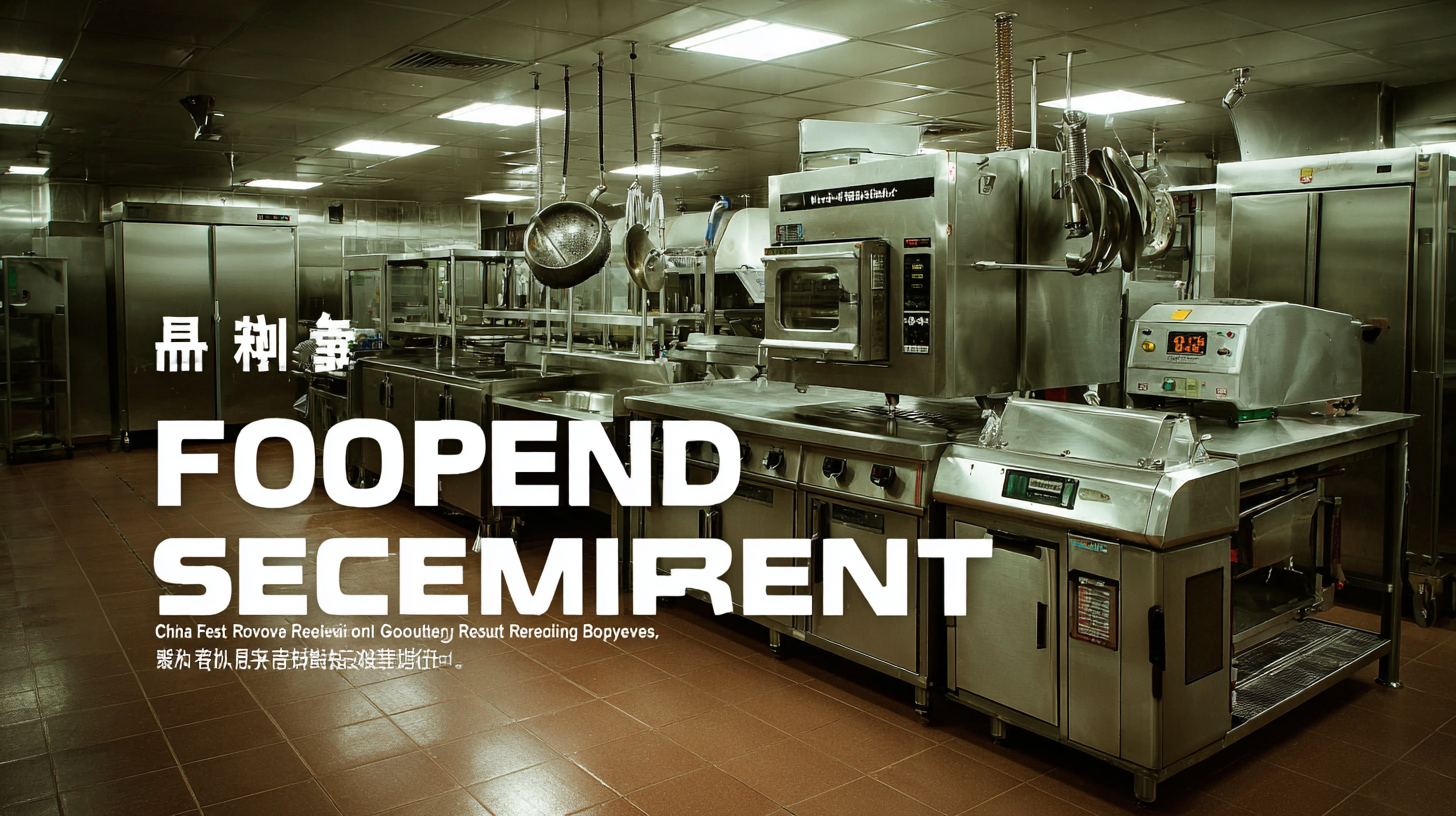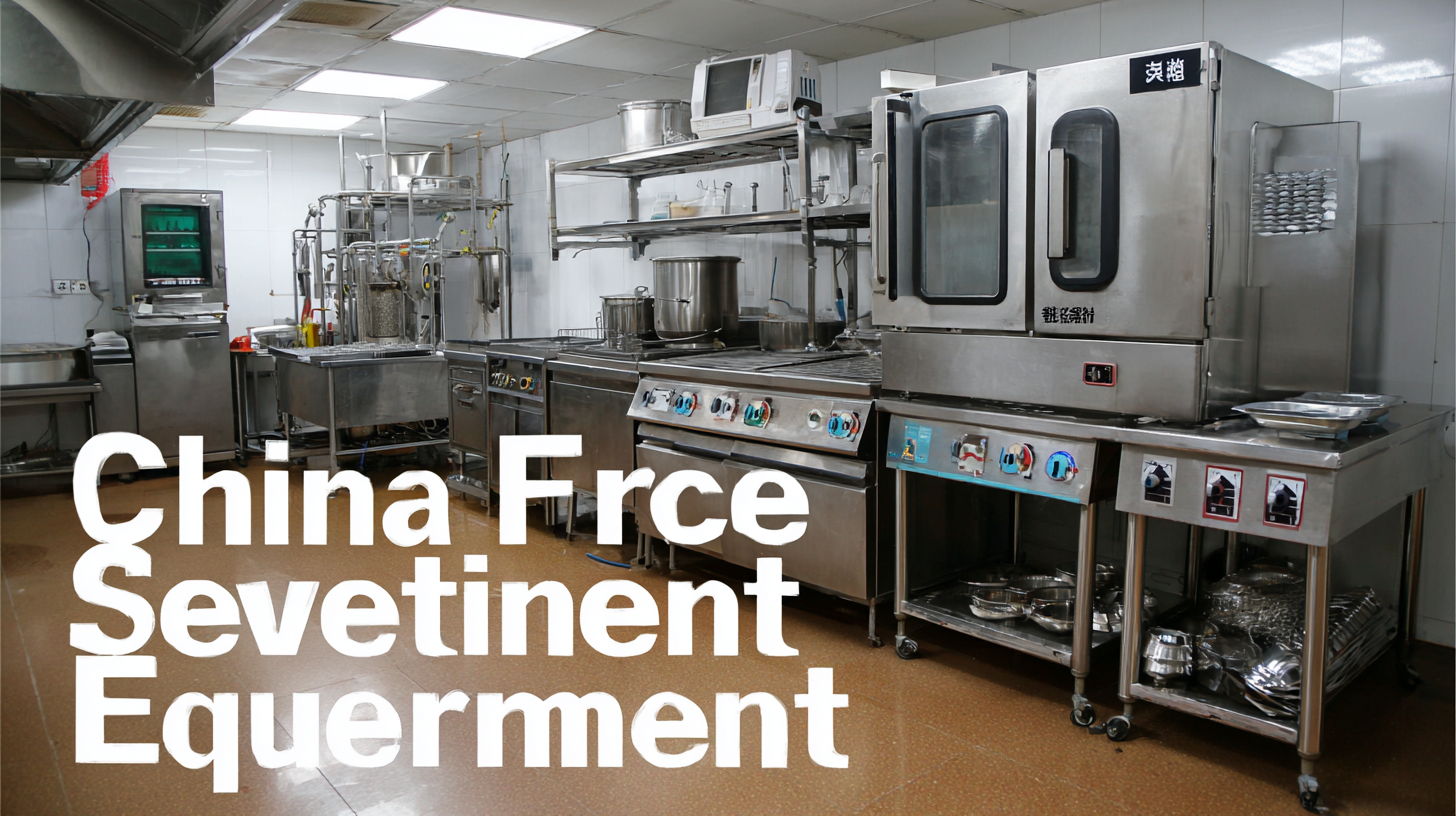China Quality Revolution in Best Food Service Equipment for Global Buyers
In recent years, the global food service equipment market has undergone a transformative shift, particularly highlighted by China's exceptional rise in quality standards and innovations. According to a report by MarketsandMarkets, the food service equipment market is projected to reach USD 400 billion by 2025, growing at a CAGR of 5.6%. This surge is largely driven by the increasing demand for effective and reliable food service equipment among international buyers looking for superior products. Chinese manufacturers are leveraging advanced technologies and stringent quality control measures to compete in this lucrative market, positioning themselves as key players. As global buyers seek to enhance operational efficiency and food quality, understanding the top strategies for sourcing food service equipment from China becomes essential for success in the ever-evolving food service industry.

The Rise of China's Food Service Equipment: Key Technical Specifications to Consider
China is emerging as a dominant player in the global food service equipment market, rapidly innovating and adapting to meet the demands of a growing industry. With a projected market size increase from $33.85 billion in 2019 to $58.07 billion by 2032, it's clear that both domestic producers and international buyers are recognizing the value of Chinese food service equipment. This growth is spurred by advancements in technology and manufacturing processes, which allow for higher efficiency and better performance in commercial kitchen appliances.

When considering the purchase of food service equipment, buyers should pay close attention to key technical specifications. Important factors include energy efficiency ratings, durability, and ease of maintenance. Understanding the specific needs of your establishment and how different equipment can optimize your operations can significantly impact overall productivity and customer satisfaction.
Tips: First, always evaluate the energy consumption of appliances, as this can lead to substantial cost savings over time. Second, look for equipment that offers easy cleaning features, which can enhance hygiene and streamline kitchen operations. Finally, consider the warranty and support services provided, as these can be crucial for long-term reliability and service continuity.
Quality Standards: How China Is Shaping the Global Food Equipment Market
China's food service equipment industry is undergoing a significant transformation, reflecting its commitment to high-quality standards that are increasingly influencing the global market. With a projected growth of the food processing and handling equipment market, reaching approximately $175 billion by 2026, China is strategically positioning itself to meet the rising demands of international buyers. This growth is not only about capitalizing on existing trends but also about enhancing production efficiencies to ensure food stability at home while exporting advanced technology and equipment abroad.
Collaboration between the private and public sectors has been crucial in maintaining domestic food security amidst global crises. The focus on crops like potatoes illustrates a shift towards diversifying agricultural practices, which not only secures food supply but also empowers manufacturers of food service equipment to innovate and improve quality standards. Furthermore, China's strict safety requirements for imported foods have set a benchmark that can be beneficial for both domestic growth and foreign partnerships, as manufacturers worldwide strive to meet these high standards. Thus, China is not just reshaping its food equipment market; it is also establishing itself as a leader in ensuring food quality and safety on a global scale.
China's Impact on Global Food Service Equipment Quality Standards
Essential Features of Chinese Food Service Equipment for International Buyers
The evolution of food service equipment in China marks a significant shift in quality standards, making it an attractive option for international buyers.
 Chinese manufacturers have adopted advanced technologies and stringent quality control processes, enhancing the durability and performance of their products. The integration of innovative designs not only meets the functional needs of various food service operations but also aligns with global aesthetic preferences. This emphasis on quality and design makes Chinese food service equipment a competitive choice in international markets.
Chinese manufacturers have adopted advanced technologies and stringent quality control processes, enhancing the durability and performance of their products. The integration of innovative designs not only meets the functional needs of various food service operations but also aligns with global aesthetic preferences. This emphasis on quality and design makes Chinese food service equipment a competitive choice in international markets.
Key features that appeal to global buyers include energy efficiency, multifunctionality, and compliance with international safety standards. Many Chinese manufacturers are now prioritizing sustainable practices, producing equipment that conserves energy and minimizes environmental impact. Additionally, the versatility of these products allows businesses to streamline their operations, as they can perform multiple functions within a single unit. As international buyers seek reliable and efficient solutions, the essential features of Chinese food service equipment position it as a leading contender in the global market.
Comparative Analysis: Chinese vs. Global Food Service Equipment Performance Metrics
In recent years, the food service equipment industry has witnessed a remarkable transformation driven by Chinese manufacturers. This "Quality Revolution" has significantly altered performance metrics, setting new benchmarks for global standards. When comparing Chinese food service equipment to their global counterparts, several key performance indicators emerge: durability, energy efficiency, and cost-effectiveness.
Chinese manufacturers have made substantial investments in technology and production processes, resulting in equipment that not only meets but often exceeds international performance metrics. For instance, enhanced materials and design innovations have yielded products with longer lifespans and improved energy efficiency. Additionally, the cost advantage often associated with Chinese products does not come at the expense of quality. Many global buyers are now recognizing that Chinese equipment can offer superior performance at competitive prices, making them a viable option for food service businesses seeking reliable and efficient solutions.
Moreover, customer feedback from around the world has highlighted the adaptability of Chinese food service equipment, which can meet varying international demands. With a focus on both performance and value, buyers can expect advancements that address specific needs, whether it be for high-volume operations or specialized culinary requirements. This shift in the market is reshaping perceptions and fostering a more inclusive approach to sourcing food service equipment globally.
Navigating Compliance: Understanding Safety and Quality Certifications in Chinese Equipment
Navigating the complexities of safety and quality certifications is essential for global buyers looking to source food service equipment from China. As the country commits to a quality revolution, understanding the various compliance requirements becomes a crucial step in ensuring that imported products meet international standards. From ISO certifications to specific local regulations, buyers must familiarize themselves with the documentation and processes necessary to validate the quality of the equipment they intend to purchase.
Moreover, each certification offers insights into different aspects of performance and safety. For instance, CE marking signifies that the equipment meets European health and safety requirements, while UL certification is focused on North American safety standards. Knowing which certifications are relevant to specific markets can not only streamline the purchasing process but also help in building trust with end-users.
As Chinese manufacturers strive for excellence, buyers can find opportunities to leverage advanced technology and improved quality assurance frameworks, ensuring a reliable supply chain that adheres to global safety standards.
